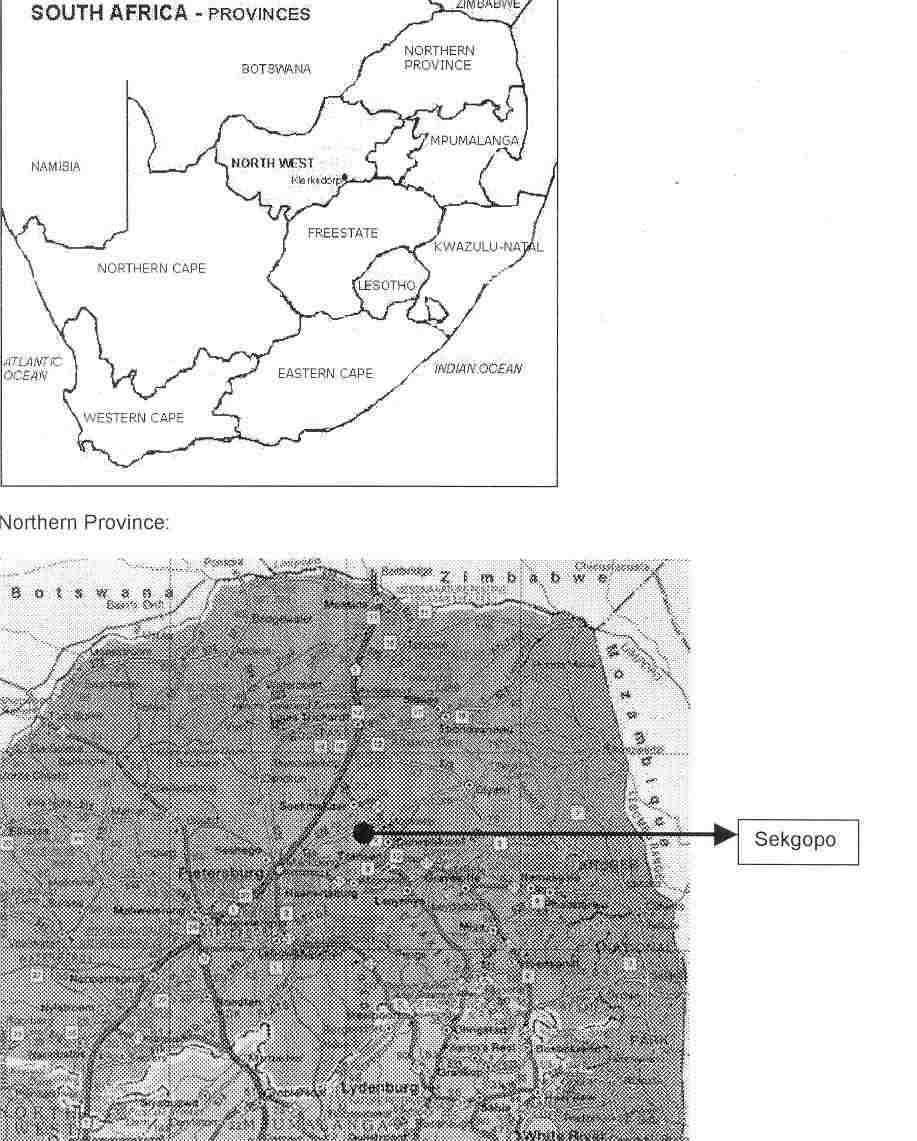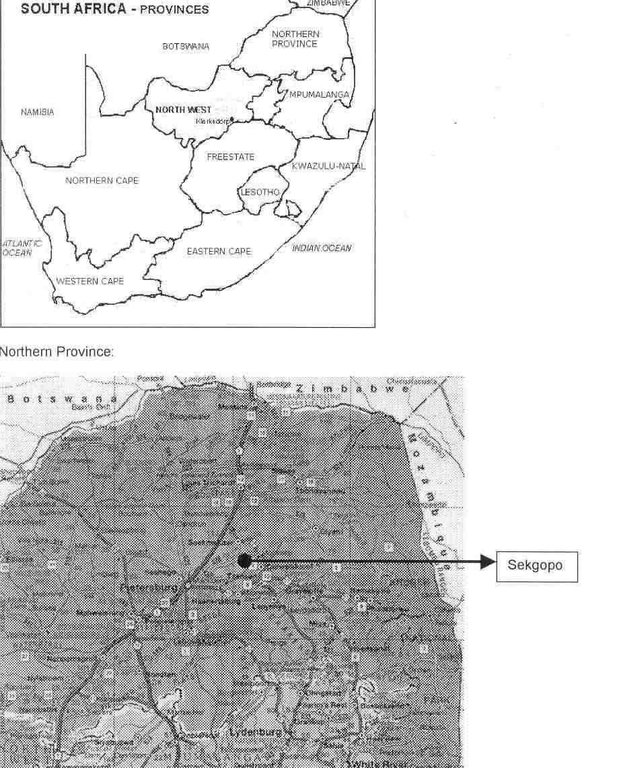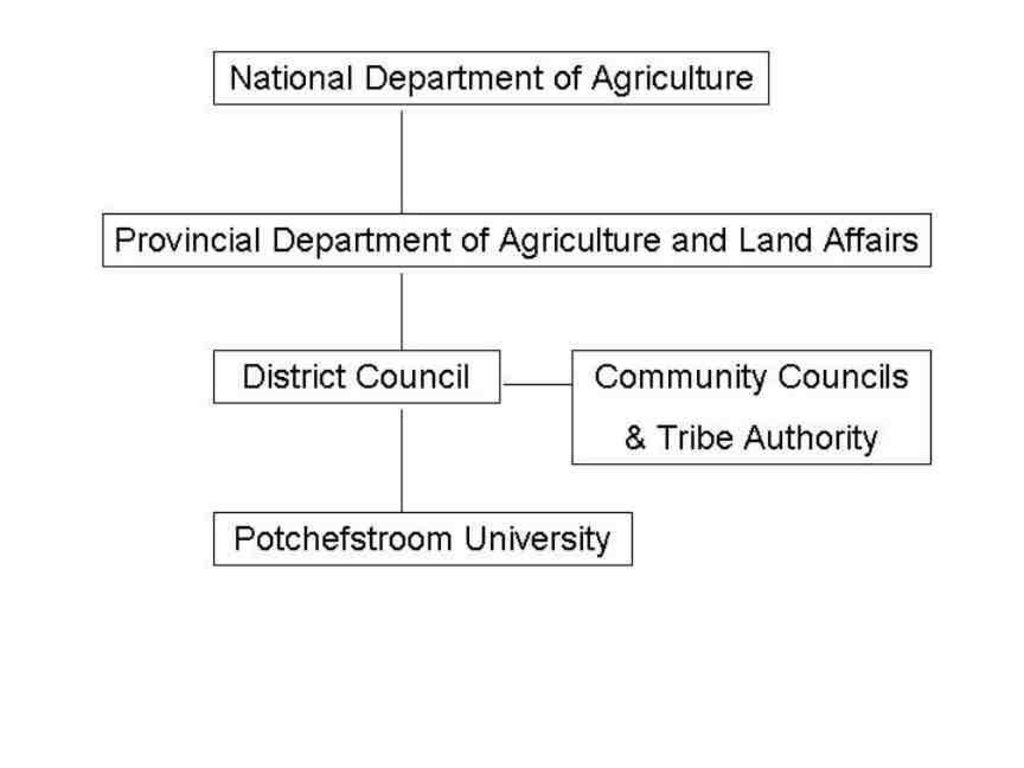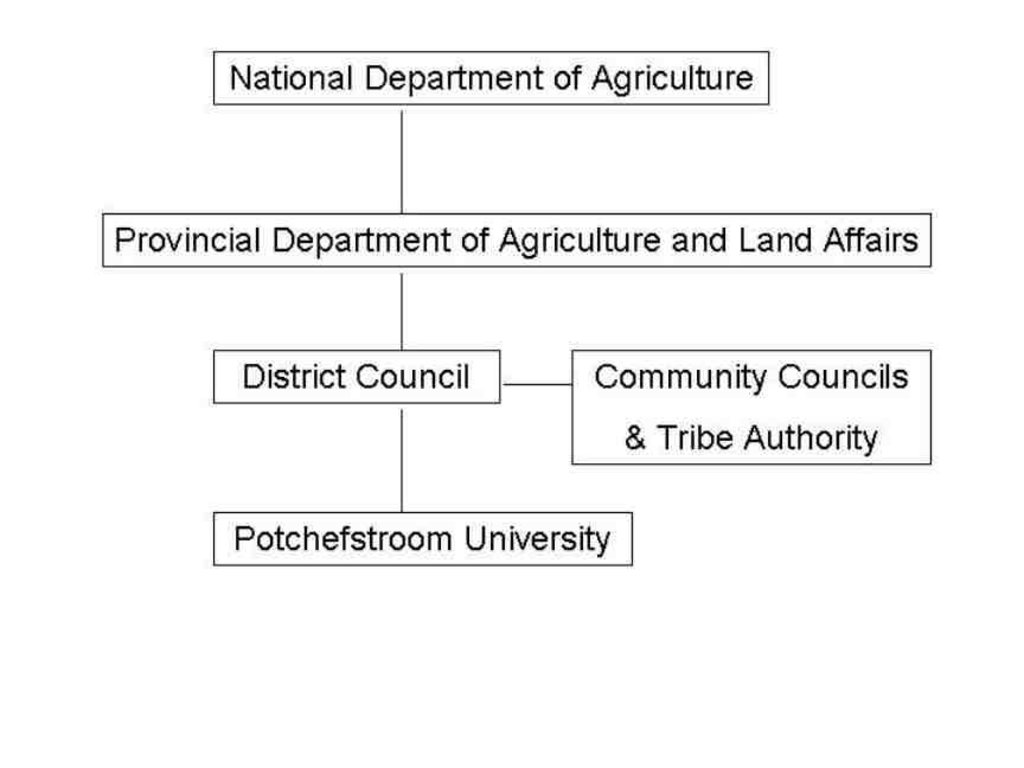Government funded demonstrations [南非]
- 创建:
- 更新:
- 编制者: Klaus Kellner
- 编辑者: –
- 审查者: Fabian Ottiger
approaches_2341 - 南非
查看章节
全部展开 全部收起1. 一般信息
1.2 参与方法评估和文件编制的资源人员和机构的联系方式
SLM专业人员:
Barac Anushka
Potchefstroom University for Christian Higher Education
南非
SLM专业人员:
Van den Berg Loraine
Potchefstroom University for Christian Higher Education
南非
SLM专业人员:
J van Rensburg Anja
Potchefstroom University for Christian Higher Education
南非
SLM专业人员:
SLM专业人员:
Van der Walt Izak
Provincial Soil Conservation Department in Northern Province
南非
SLM专业人员:
Monque Augustine
Provincial Soil Conservation Department in Northern Province
南非
有助于对方法进行记录/评估的机构名称(如相关)
Potchefstroom Universiteit vir CHO (Potchefstroom Universiteit vir CHO) - 南非有助于对方法进行记录/评估的机构名称(如相关)
Department of Agriculture of Zambia (Department of Agriculture) - 赞比亚有助于对方法进行记录/评估的机构名称(如相关)
Dept. of Agriculture, Northern Province (Dept. of Agriculture, Northern Province) - 南非1.3 关于使用通过WOCAT记录的数据的条件
编制者和关键资源人员接受有关使用通过WOCAT记录数据的条件。:
是
1.4 SLM技术问卷的参考
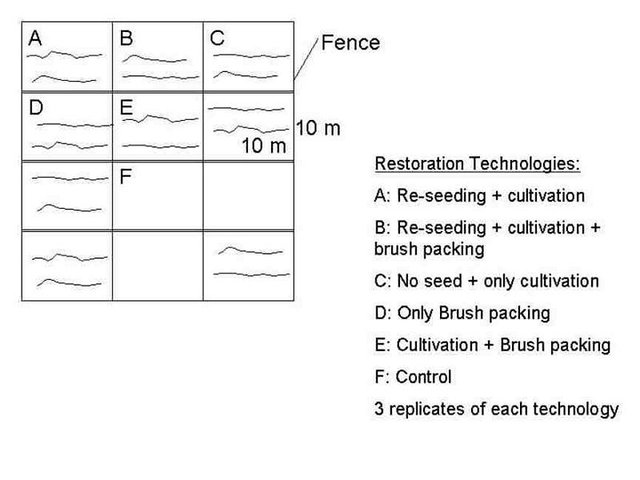
Revegetation and re-seeding [南非]
Revegetation of old, degraded land. Restoring area to increase grazing capacity and production.
- 编制者: Klaus Kellner
2. SLM方法的描述
2.1 该方法的简要说明
Government funded restoration demonstration site to restore degraded land - by community participation. Community becoming the key sake holders - Capacity building.
2.2 该方法的详细说明
该方法的详细说明:
Aims / objectives: Awareness raising and community participation. Capacity building, to teach the aim and type of technologies to the communities with the help of extension workers, scientists and academic staff, including postgraduate students. The main aim is to improve the condition of the land for high grazing capacity and production potential.
2.3 该方法的照片
2.5 采用该方法的国家/地区/地点
国家:
南非
区域/州/省:
North West Province
Map
×2.6 该方法的开始和终止日期
终止年份(若不再采用该方法):
2002
2.7 方法的类型
- 基于项目/方案
2.8 该方法的主要目的/目标
The Approach focused mainly on SLM with other activities (Capacity building of SWC technicians and community members.)
Awareness and participation. Training of technologies for restoration. On site or 'On-Farm' technology application.
The SLM Approach addressed the following problems: Restoring degraded land (old lands) by cultivation and oversowing technologies.
2.9 推动或妨碍实施本办法所适用的技术的条件
财务资源和服务的可用性/可得性
- 阻碍
No money for restoration. Negative cost/benefit ration in short term.
Treatment through the SLM Approach: Apply more cost effective technologies
法律框架(土地使用权、土地和水使用权)
- 启动
The existing land ownership, land use rights / water rights helped a little the approach implementation: Help: land users again appreciated the role and importance of the natural resources. Hinder: lack of land tenure and ownership.
了解SLM,获得技术支持
- 阻碍
No awareness and skills
Treatment through the SLM Approach: Capacity building and job creation. Commitment by stake holders and rural communities assured.
3. 相关利益相关者的参与和角色
3.1 该方法涉及的利益相关者及其职责
- 当地土地使用者/当地社区
Specific ethnic groups: Sotho's
Work done and technology carried out by community. Mostly women as they need to earn money for food and household. Community councils; tribal authority - Chiefs make decisions.
- NGO
University helped with implementation of technology
- 国家政府(规划者、决策者)
Funded mainly by NDA
- 国际组织
Funds
如果涉及多个利益相关者,请注明领导机构:
National specialists improved and designed technologies and land users gave inputs with regard to type of area, plants and usage of grazing land.
3.2 当地土地使用者/当地社区参与该方法的不同阶段
| 当地土地使用者/当地社区的参与 | 指定参与人员并描述活动 | |
|---|---|---|
| 启动/动机 | 被动 | Mainly:public meetings; partly: workshops/seminars |
| 计划 | 被动 | Mainly: workshops/seminars; partly: public meetings |
| 实施 | 外部支持 | Mainly: responsibility for major steps; partly: casual labour |
| 监测/评估 | 互动 | |
| Research | 互动 | on-farm |
3.3 流程图(如可用)
3.4 有关SLM技术选择的决策
具体说明谁有权决定选择要实施的技术:
- 主要是SLM专家,咨询土地使用者之后
解释:
consultative.
Decisions on the method of implementing the SLM Technology were made by mainly by SLM specialists with consultation of land users. consultative.
4. 技术支持、能力建设和知识管理
4.1 能力建设/培训
是否为土地使用者/其他利益相关者提供培训?:
是
培训形式:
- 农民对农民
- 示范区域
- 公开会议
涵盖的主题:
Ecological principles; Restoration technologies; NRM principles.
4.2 咨询服务
土地使用者有权使用咨询服务吗?:
是
指明是否提供了咨询服务:
- 在土地使用者的土地上
说明/注释:
Name of method used for advisory service: Demonstration/Participation; Key elements: 'Learning by Doing'; 1) Mainly: government's existing extension system, Partly: non-governmental agency.
Advisory service is inadequate to ensure the continuation of land conservation activities; Monitoring, data analysis and presenting of results will be conducted by Research staff and project implementation. Expert advice needed on a continuous basis.
4.3 机构强化(组织发展)
是否通过这种方法建立或加强了机构?:
- 是,少许
具体说明机构的强化或建立程度:
- 本地
具体说明支持类型:
- 能力建设/培训
4.4 监测和评估
监测和评估是该方法的一部分吗?:
是
注释:
bio-physical aspects were regular monitored through measurements
technical aspects were ad hoc monitored through observations
socio-cultural aspects were ad hoc monitored through observations
economic / production aspects were ad hoc monitored through observations
area treated aspects were regular monitored through measurements
no. of land users involved aspects were regular monitored through measurements
management of Approach aspects were regular monitored through measurements
There were no changes in the Approach as a result of monitoring and evaluation: This was one site establishment for demonstration purposes of technologies.
4.5 研究
研究是该方法的一部分吗?
是
明确话题:
- 生态学
- 技术
提供进一步的细节,并指出是谁做的研究:
Vegetation and soil monitoring/analysis. Application of restoration technologies in demonstration plots.
Research was carried out on-farm
5. 融资和外部物质支持
5.1 该方法中SLM组成部分的年度预算
如果不知道准确的年度预算,请给出一个范围:
- < 2,000
注释(例如主要的资助来源/主要捐助者):
Approach costs were met by the following donors: government (national - Agriculture): 80.0%; national non-government (University): 20.0%
5.2 为土地使用者提供财政/物质支援
土地使用者是否获得实施该技术的财政/物质支持?:
是
5.3 对特定投入的补贴(包括劳动力)
- 设备
| 具体说明哪些投入得到了补贴 | 程度如何 | 对补贴做出具体说明 |
|---|---|---|
| 机械 | 部分融资 | |
- 农业
| 具体说明哪些投入得到了补贴 | 程度如何 | 对补贴做出具体说明 |
|---|---|---|
| 种子 | 充分融资 | |
| 化肥 | 充分融资 | |
- 建筑
| 具体说明哪些投入得到了补贴 | 程度如何 | 对补贴做出具体说明 |
|---|---|---|
| Fence | 充分融资 | |
如果土地使用者的劳动力是一项重要的投入,那么是不是:
- 以现金支付
注释:
Job-creation incentives
5.4 信用
是否根据SLM活动的方法给予信用值?:
否
6. 影响分析和结论性陈述
6.1 方法的影响
该方法是否帮助土地使用者实施和维护SLM技术?:
- 否
- 是,很少
- 是,中等
- 是,支持力度很大
Oversowing and better soil seed bank; good cultivation methods; certain adapted grass species used.
Land users do not own the land - any SWC application can be of more value and land users will be more committed if they take ownership.
Did other land users / projects adopt the Approach?
- 否
- 是,很少
- 是,中等
- 是,支持力度很大
Approach will be extended to other rural areas.
6.3 方法活动的可持续性
土地使用者能否维持通过该方法实施的措施(无外部支持的情况下)?:
- 是
若是,请说明如何维持:
Extension workers have learned the SWC technology from specialists (University researcher) and he/she together with the land user will hopefully extend the technology to larger and other areas on that own. Specialist must however make results available o
6.4 该方法的长处/优点
| 土地使用者眼中的长处/优势/机会 |
|---|
| Learned a lot - especially with regard to the restoration process |
| Earned money - job-creation |
| Knowledge about sustainable rangeland management strategies improved |
| School children and teachers involved. School projects on SWC technologies and restoration ecology in particular |
| 编制者或其他关键资源人员认为的长处/优势/机会 |
|---|
| Co-operation between all stakeholders (How to sustain/ enhance this strength: By making data and analysis scientifically sound - results better) |
| Land users, technicians/extension, researcher, policy makers |
| SWC technology will be monitored by scientists - value added to project |
6.5 该方法的弱点/缺点以及克服它们的方法
| 土地使用者认为的弱点/缺点/风险 | 如何克服它们? |
|---|---|
| Often too long before action is taken | Faster action. Extension better and more committed |
| Linguistic abilities. Land user has another language (Sotho), not spoken by specialist | Take local language classes and learn local language |
| SWC technology application must not only be build on job-creation incentives, but must be sustainable in the long term and applied by land user without payment. |
| 编制者或其他关键资源人员认为的弱点/缺点/风险 | 如何克服它们? |
|---|---|
| Often too long before action is taken | Faster action. Extension better and more committed |
| Linguistic abilities. Land user has another language (Sotho), not spoken by specialist | Take local language classes and learn local language |
| SWC technology application must not only be build on job-creation incentives, but must be sustainable in the long term and applied by land user without payment. |
7. 参考和链接
7.1 方法/信息来源
- 实地考察、实地调查
- 与土地使用者的访谈
链接和模块
全部展开 全部收起链接

Revegetation and re-seeding [南非]
Revegetation of old, degraded land. Restoring area to increase grazing capacity and production.
- 编制者: Klaus Kellner
模块
无模块


